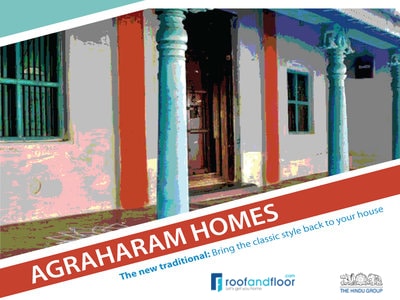Architecture is seldom unaffected by culture. In fact, many architectural styles are derived from the cultural ethos of specific communities. Agraharam homes were representative of the belief system of Brahmins in South India. To onlookers, one glance at the unique manner of construction would be enough to identify it as the residence of Brahmin families.
Agraharam house structure
In a typical agraharam, one could see rows of houses lined on either side of the street with common walls. The focal points of such colonies were temples. The alignment of the streets ran east to west. These colonies served as residences for the priests of these temples and their families.
The agraharam style of architecture featured distinctive aspects such as Madras terraces, country tile roofing, lime plastering and Burma teak rafters. The plan of each house consisted of the mudhal kattu or receiving area, irandaam kattu or living area, moondram kattu or kitchen and backyard. The mitham was a central space that opened out to the sky. Large platforms called thinnais extending towards the streets lined the outer walls. The flooring was predominantly red oxide to keep the interiors cool in contrast to the harsh heat outside.
The streets were spaces that were symbolic of the Brahmin community. Often occupied by playing children, vendors and elders, the streets were also where the community would hold meetings and religious processions.
Current situation
The agraharams in South India are currently in a state of decline, threatened by development and lack of resources to maintain them in their original state. Apartment blocks and individual homes replace these charming houses now. Although there are a few families who intently protect the agraharam homes, their maintenance is getting more expensive and the know-how required to do the same is rapidly dwindling as that generation passes away.
Some agraharams are owned by temple trusts and rented out. In such cases, neither do the trusts have adequate fund flow to maintain these homes, nor do the tenants have rights to make the required repairs.
Preventing complete disappearance of this unique architectural style will require government intervention, incentives to develop skilled labour in this area and an increase in general awareness of the cultural significance.
Modern adaptations
While replicating an agraharam exactly is quite difficult considering the increasing space constraint, certain features can easily be adapted while building your dream home. A structure that respects climatic conditions and protects inhabitants from the same, as well as a layout that encourages community interaction, can be integrated into the planning of your home.


